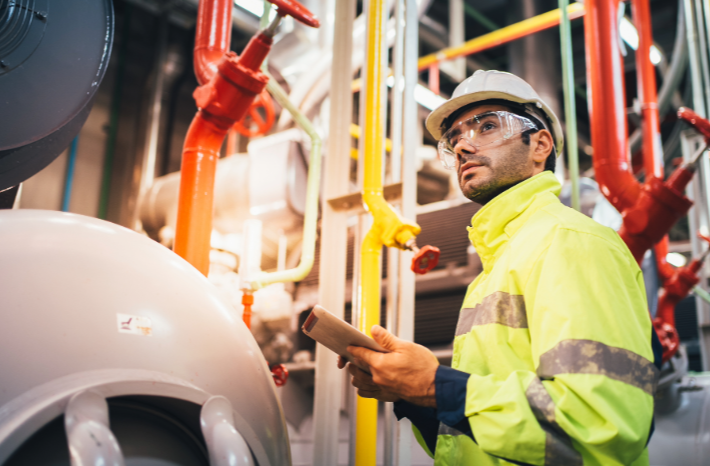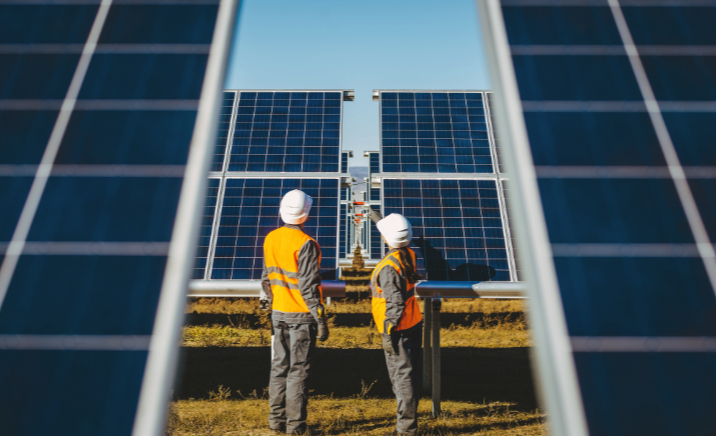Let's dive into the world of Sustainability and Green Maintenance. We're not merely patching up the damages; it's about embracing a new philosophy that nurtures our environment and enhances our living spaces. Embarking on this journey, we adopt innovative strategies to maintain pristine environments and nurture Earth's well-being simultaneously. You'll learn how smart maintenance can slash energy bills, boost equipment life spans, and even make your space more enjoyable to live or work in.
We are diving into reduced running expenses by adopting energy-saving methods, turning towards green energy for a minimal environmental impact, and employing straightforward water conservation strategies. Additionally, we'll guide you through the nuances of predictive maintenance, ensuring efficient operation by utilizing resources wisely—since understanding the optimal timing for intervention is crucial.
Ready for a change? Hang tight while we dive into these game-changing tactics side by side.
Understanding the Fundamentals of Green Maintenance

The Intersection of Maintenance and Environmental Sustainability
Maintenance activities have a hidden side: they can either support or hinder our environmental goals. In striving for operational efficiency, conventional upkeep methods sometimes need to pay more attention to their ecological footprint. But there's good news. Integrating green practices into our maintenance routines boosts their effectiveness and plays a significant role in supporting environmental sustainability.
Embracing this change doesn't entail a trade-off in effectiveness. Sustainable maintenance reduces waste and energy consumption without sacrificing quality or reliability. For instance, simple changes like opting for eco-friendly materials in routine upkeep can significantly lower the release of harmful chemicals into our surroundings.
Critical Principles Behind Sustainable Maintenance
The backbone of green maintenance lies in its core principles, which prioritize environmental stewardship alongside operational excellence. First, it champions minimizing resource use—everything from sparingly using water to adopting renewable energy sources wherever possible.
Moreover, sustainable practices aim to reduce excessive energy use that contributes significantly to operational costs and the enlargement of the carbon footprint. Making wiser decisions involves actions like embracing strategies for predictive upkeep, inspired by enlightening reads such as "Predictive Maintenance in Farming and Agriculture," showcasing the utilization of renewable resources to enhance efficiency and diminish wastage.
In essence, by applying environmentally friendly methods across all facets—from cleaning products used during facility upkeep to intelligent spare parts management—we're able to reduce costs and conserve vital resources for future generations while maintaining assets operating at peak efficiency.
Energy Efficiency in Sustainable Maintenance Practices
Regarding sustainable maintenance, the goal is to keep things running smoothly and do so in a way that's kinder to our planet. It's about striking a balance between operational needs and environmental responsibility. Let's explore how focusing on energy efficiency can revolutionize maintenance practices.
The Intersection of Maintenance and Environmental Sustainability
Maintenance operations have traditionally been seen as cost centers, focused primarily on fixing what's broken. However, with a shift towards sustainability, there's an increasing recognition of how these activities impact our environment. Organizations can significantly reduce their carbon footprint by optimizing maintenance tasks for energy efficiency while also cutting down operational costs.
Adopting these practices isn't merely beneficial for the planet; it also translates into intelligent financial strategy. Research indicates that weaving eco-friendly habits into upkeep procedures can slash energy use throughout buildings, unlocking considerable economic benefits.
Key Principles Behind Sustainable Maintenance
To genuinely embrace green maintenance principles means rethinking every aspect of your operation - from the equipment you use to how often you perform checks and balances. The focus shifts from merely reacting when something goes wrong (reactive maintenance) to anticipating issues before they occur (predictive and preventive maintenance). Adopting this forward-thinking strategy does more than just safeguard essential resources such as H2O and power; it guarantees that all tools are running at their utmost capability, thereby reducing excess in every form.
For example, implementing low-flow toilets or turning lights off automatically are simple yet effective ways to apply environmentally friendly solutions within your routine. Adopting these seemingly minor practices, when viewed individually, cumulatively leads to a substantial decrease in the overuse of energy - heralding an era that embraces sustainability.
Implementing Renewable Energy Solutions in Maintenance

Shifting maintenance operations towards sustainability isn't just a trend; it's a necessity. Incorporating green energy sources is crucial in this shift, diminishing the ecological footprint and the expenses associated with running operations.
Embracing renewable energy curtails rampant energy use, often the villain behind soaring costs and carbon emissions, and paints a greener, more cost-effective future. Embracing eco-friendly power, companies find themselves trimming down on costs and enriching the environment with their operations.
In farming and agriculture, a prime illustration emerges with predictive maintenance, where adopting renewable energies has yielded tangible rewards. Adopting this strategy safeguards crucial resources and guarantees that assets function at their utmost capacity, eliminating any needless waste or expenses.
Redefining Efficiency with Sustainable Energy Sources
Incorporating solar panels or wind turbines into your maintenance routine might seem like an upfront investment, but consider the long-term savings on electricity bills and repair costs. Plus, using green power significantly reduces reliance on non-renewable energy sources that harm our planet.
Embracing this shift to eco-friendly habits transcends mere cost-cutting; it's an active step in lessening our ecological impact. It demands we rethink how we source power for heating, cooling, and lighting facilities under our care.
Consider intelligent spare parts management systems powered by renewables to make these changes stick. These advancements guarantee you'll always have just what you need—no excess, no shortages—thereby reducing waste and idle time, all while optimizing the preservation of resources in every maintenance activity.
Water Conservation Techniques in Eco-Friendly Maintenance
Discussing the harmony between conserving water and maintaining eco-friendly practices is finding a middle ground where effectiveness meets stewardship of our surroundings. Adopting green methods safeguards our Earth and markedly reduces running expenses.
The Intersection of Maintenance and Environmental Sustainability
In the realm of upkeep, each task is a chance to embrace water conservation strategies that maintain top-notch functionality and dependability. By refining these processes, establishments can bolster their commitment to sustainability while guaranteeing that their equipment functions at its utmost effectiveness. It's a win-win situation where saving water reduces energy consumption because less energy is needed for heating and pumping water.
Adopting this strategy perfectly marries the concept of sustainable upkeep with the ethos of minimizing waste and safeguarding essential supplies. This could mean installing low-flow toilets in facility restrooms or adopting green cleaning methods that require less water.
Key Principles Behind Sustainable Maintenance
Sustainable maintenance hinges on a few key principles: reduce, reuse, recycle—and let's add another crucial one—conserve. Reducing water usage through efficient equipment maintenance is an excellent start; think of drip irrigation systems for landscaping instead of traditional sprinklers, which often waste more than irrigate.
To take things further, reusing greywater from sinks and showers for non-potable purposes like flushing toilets or watering plants substantially reduces freshwater demand. Also, consider recycling rainwater by capturing it for similar uses; this reduces dependence on municipal supply and mitigates stormwater runoff issues.
Predictive Maintenance in Farming and Agriculture highlights how integrating renewable energies can enhance predictive maintenance strategies, leading to smarter resource use, including precious H2O.
The Impact of Predictive Maintenance on Sustainability
By forecasting the need for maintenance, we're not just saving on resources but also championing a more sustainable way of managing operations. This approach elevates operational efficiency and marks a significant stride towards achieving environmental responsibility.
Optimizing Resource Use with Precision
Essentially, predictive upkeep utilizes data analysis to anticipate the moments machinery will need attention. By accurately predicting when machinery requires maintenance, we sidestep the inefficiency of sticking to rigid schedules or delaying until a failure happens, significantly lowering squandered resources. The result? Energy and resources are conserved significantly, preventing needless waste.
By adopting this approach, we're not just ensuring that our resources run more smoothly but also championing a greener way of handling them. Businesses can significantly lessen their carbon footprint by sidestepping excessive energy consumption often associated with reactive maintenance strategies.
Leveraging Renewable Energy in Predictive Strategies
Integrating green energy into the foresight of maintenance practices boosts our quest for eco-friendliness. Transitioning to solar or wind power for running diagnostic tools or charging sensors is pivotal in diminishing the overall environmental impact of maintenance activities. Exploring the realm of predictive maintenance within agriculture, an article unveils how these cutting-edge technologies utilize renewable energies to bolster sustainability efforts significantly.
Adopting clean energy to fuel sophisticated diagnostic tools pushes companies toward greener operations. It maintains high standards of reliability and performance, paving the way for unprecedented sustainable development in various sectors.
5 Ways CMMS Software Enhances Green Maintenance Initiatives
Leveraging Data for Efficient Resource Management
Data transcends mere figures within eco-friendly upkeep, morphing into a guide towards enduring environmental stewardship. With CMMS software cutting costs and ecological footprints simultaneously, organizations can use this tool to analyze energy consumption patterns. It's not just about spotting the energy hogs but also about uncovering chances to switch to greener power solutions.
This technology's remarkable aspect lies in its ability to scrutinize equipment efficiency through live data observation, seamlessly blending insight with action. Grasping the nuances of asset performance allows crews to tailor maintenance timelines, cutting down on redundant inspections that accelerate degradation and lead to squandering.
The predictive analytics aspect of CMMS platforms also plays a crucial role here. Predictive maintenance—using data trends over time to predict future equipment failures before they happen—ensures resources are used only when necessary. It's an intelligent approach supporting cost reduction and environmental conservation by minimizing resource depletion.
Optimizing Spare Parts Inventory with Intelligent Systems
An often-overlooked area where green initiatives can take root is spare parts management. Traditional methods might lead us down a path cluttered with excess inventory or urgent orders due to lack of foresight—all contributing negatively to our carbon footprint through increased transportation emissions and manufacturing demands.
However, by employing intelligent systems within CMMS software, companies ensure their spare parts inventory becomes something other than another statistic in wasteful practices. These systems forecast demand based on historical data and current operational needs, ensuring every part ordered has its place immediately upon arrival—not years down the line sitting on a shelf collecting dust.
This strategic approach goes hand-in-hand with adopting eco-friendly materials for replacements wherever possible—from biodegradable lubricants to recycled metal components—a move supported by streamlined procurement processes enabled by advanced CMS solutions.
Switching to digital documentation and timetables has led businesses to cut down remarkably on paper consumption, a seemingly minor adjustment that profoundly benefits global forest conservation. With such capabilities, organizations find themselves better equipped than ever to align their maintenance operations with broader sustainability goals while maintaining effectiveness and financial viability.
Key Takeaway:
CMMS software isn't just a tech tool; it's your green guide. It helps cut costs and carbon footprints by optimizing resource use, from predicting equipment needs to smart spare parts management. Plus, it pushes for eco-friendly materials and slashes paper waste, making sustainability easy without hurting the bottom line.
Reducing Carbon Footprint Through Preventative Maintenance

Emphasizing Regular Checks to Minimize Emissions
Keeping gear in tip-top shape goes beyond dodging malfunctions; it's crucial for slashing carbon outputs and veering into an eco-friendly trajectory. Think of preventive maintenance as your secret weapon against the silent creep of inefficiency that increases operational costs and puffs up your carbon footprint. By emphasizing regular checks, you ensure that machines operate at peak efficiency, sidestepping the energy waste and excess emissions linked with deteriorating equipment.
Adopting this strategy seamlessly supports broader ecological objectives, prolonging the usefulness of assets while curtailing redundant equipment utilization. It's like ensuring your car is regularly serviced to avoid guzzling extra fuel because of a dirty air filter or under-inflated tires - minor fixes can lead to significant savings in energy consumption and greenhouse gas emissions.
Imagine, if you will, the role of foresight in sustainability - predictive upkeep methods weave seamlessly into this tale of ecological stewardship. By using data to predict when maintenance is required before things go south, we cut down on wastage even more—ensuring resources are used precisely when needed and no more. This doesn't just apply to heavy machinery either; everything from HVAC systems in buildings to fleets of vehicles can benefit from this intelligent approach highlighted here.
Revolutionizing Facilities with Green Cleaning Products
Adopting eco-friendly cleaning solutions represents a crucial leap towards preserving our planet, highlighting an era where sustainability and environmental stewardship take center stage. Incorporating these eco-conscious products into maintenance routines redefines how we uphold cleanliness and safety without sacrificing our commitment to the planet.
The Intersection of Maintenance and Environmental Sustainability
Maintenance is often seen as simply keeping things running smoothly. But there's more to it when you introduce environmentally friendly practices into the mix. Switching to eco-friendly cleaning agents reduces harmful substances that harm the environment, yet it still ensures the highest level of sanitation. Adopting this approach seamlessly meshes with overarching ambitions to lessen our environmental impact and safeguard the purity of indoor air.
Adopting sustainable resources benefits the earth more than just; it substantially reduces the energy needed, paving the way for a greener future. The production of conventional cleaners often demands a hefty amount of resources, leading to an avoidable spike in energy usage that could be mitigated by opting for more sustainable substitutes.
Leveraging Eco-Friendly Materials for Better Outcomes
Eco-friendly means more effective. Many green cleaning products leverage natural ingredients that are tough on dirt but gentle on surfaces—and the environment—reducing waste and conserving vital resources like water. Diving into the realm of Green Maintenance unveils how embracing these practices significantly bolsters our journey toward sustainability while maintaining top-notch performance and safeguarding well-being.
Moreover, transitioning to green practices involves rethinking spare parts management and maintenance routines by applying environmentally responsible principles across all operations—from selecting low-flow toilets to ensuring peak efficiency in equipment maintenance using sustainable energy sources whenever possible.
Conclusion
Adopting sustainable practices and focusing on eco-friendly upkeep fundamentally alters our approach to nurturing the world around us. You've seen it's not just repair work; it's a commitment to our planet.
Cutting down on energy use, tapping into renewable sources, and conserving water are game-changers. Predictive maintenance means acting smartly—not wastefully.
Every tiny action you take towards embracing sustainability plays a crucial role. Remember that. These moves have had a significant impact, from using CMMS software to streamline operations to opting for eco-friendly cleaning products.
Let this journey inspire you. Make those switches in your routine that lean towards sustainability. Because when we all do our part, the effects are monumental.
Let's build a future where green maintenance isn't an option—it's the standard.
 For immediate assistance, please call us at (512) 328-3235
For immediate assistance, please call us at (512) 328-3235


